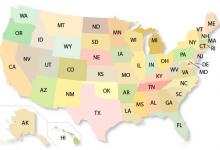Increasing Polypharmacy and Drug Interactions in Seniors Save

Qato and colleagues have published in JAMA a cohort study that examined the use of both prescription and over-the-counter medications among older adults and the frequency of major drug-drug interactions. The study shows the elderly are especially at risk, and the situation is getting steadily worse.
Using Micromedex to identify potential major drug-drug interactions, they sought to estimate the population prevalence of medication use (in aggregate and by therapeutic class), concurrent use, and major drug-drug interactions.
Two cohorts were studied in two different time frames: 2005-2006 (n-2351) and 2010-2011 (n-2206). Prescription medication use rose slightly from 84.1% in 2005-2006 to 87.7% in 2010-2011 (P = .003). More importantly, concurrent use of at least 5 prescription medications increased from 30.6% to 35.8% (P = .02). At the same time, over-the-counter medications declined from 44.4% to 37.9% and dietary supplement use increased from 51.8% to 63.7% (P .001 for both). There were clinically significant increases in the use of statins (33.8% to 46.2%), antiplatelets (32.8% to 43.0%), and omega-3 fish oils (4.7% to 18.6%) (P .05 for all).
The risk of a potential major drug-drug interaction significantly increased from an estimated 8.4% in 2005-2006 to 15.1% in In 2010-2011, approximately 15.1% amongst older adults (P .001).
This substantial increase in polypharmacy (as measured by concurrent drug use) and a 15% risk of major drug-drug interactions in older adults is a major concern. Strategies to improve drug safety in the elderly must take into account both prescription and over-the-counter medications.










If you are a health practitioner, you may Login/Register to comment.
Due to the nature of these comment forums, only health practitioners are allowed to comment at this time.